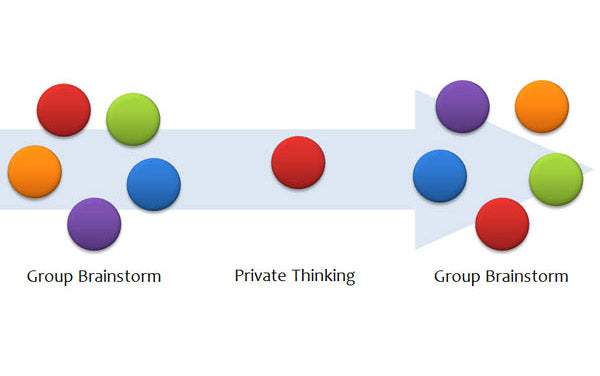Purpose
This exercise pushes delegates to find innovative solutions to common problems by working within strict, arbitrary constraints. The setup leads to creative problem-solving and builds emotional resilience by challenging delegates to overcome frustration and think beyond traditional approaches.
Objective
Delegates are divided into teams and tasked with solving a problem under arbitrary constraints, such as developing a marketing strategy for a new product without using social media or digital ads. Teams will present their creative and practical solutions while working within these limitations.
What You Need
- A list of problems with corresponding constraints (scenarios). Print these on separate cards. A larger set of examples is provided at the end. Some examples are:
- “Launch a product, but you can’t use social media.”
- “Develop a new customer feedback system, but without surveys.”
- “Run a training course on leadership skills, but without displaying slides or giving handouts.”
- Flipchart paper or A4 sheets for brainstorming
- Colour markers for visualisation
Setup
- Start by explaining that creativity often flourishes under constraints, which force us to think in new ways. Highlight that in real-world scenarios, constraints such as budget, time, or resource limitations often lead to innovative problem-solving.
- Divide delegates into pairs or teams of three.
- Assign each team a scenario along with a specific constraint.
- Give each team 10 minutes to brainstorm and develop their solution within the constraints. Encourage teams to think outside of their usual strategies and collaborate creatively. They should write or sketch their ideas on paper and visualise their solution.
- After the allocated time, get each team to present their solution. Get the groups to explain how they navigated the constraint and why their solution is effective.
- After all teams have presented, facilitate a group discussion on the role of constraints in problem-solving and creativity.
Timing
Explaining the Exercise: 2 minutes
Activity: 10 min for brainstorming + 15 min for presentations = 25 minutes
Group Feedback: 10 minutes
Discussion
Once the teams have presented, bring the group together for a reflective discussion. Use the following questions to guide the conversation:
- How did the constraint influence your problem-solving approach? Did it make the task more frustrating or more interesting?
- Were there moments where you felt stuck due to the limitation? How did you overcome that?
- Did the constraint force your team to consider solutions you wouldn’t normally think of? If so, which ones?
- How did your team handle the pressure of working within strict limits? Did you notice any creative breakthroughs?
- What role did emotional resilience play in this exercise? How did you manage any frustration during the brainstorming process?
- Can you think of a time in your work or life where constraints led to unexpected creativity?
- How can you apply the lessons from this exercise to real-world problems where you face constraints such as budget, resources, or time?
Scenarios
“Launch a product, but you can’t use social media.”
“Develop a new customer feedback system, but without surveys.”
“Run a training course on leadership skills, but without displaying slides or giving handouts.”
“Create a content strategy, but without using blogs or videos.”
“Initiate a community outreach program, but without using events or in-person interactions.”
“Build a brand identity, but without using a logo or tagline.”
“Create an onboarding experience for new employees, but without any paperwork or digital forms.”
“Improve customer retention, but without offering loyalty rewards or special offers.”
“Design a marketing campaign, but you can’t use email or advertisements.”
“Increase employee engagement, but without using team-building activities or surveys.”
“Promote a new product, but without using influencers or paid promotions.”
“Create a customer support strategy, but without using chatbots or phone calls.”
“Boost website traffic, but without using SEO or paid search ads.”
“Organise a company retreat, but without leaving the office premises.”
“Generate leads for your business, but without using cold calls or webinars.”
“Improve workplace productivity, but without using time-tracking tools or apps.”
“Launch a new online service, but without offering a free trial or demo.”
“Enhance employee skills, but without formal training sessions or online courses.”
Soft Skills Training Materials
Get downloadable training materials
Online Train the Trainer Course:
Core Skills
Learn How to Become the Best Trainer in Your Field
All Tags
Training Resources for You

Course Design Strategy
Available as paperback and ebook

Free Training Resources
Download a free comprehensive training package including training guidelines, soft skills training activities, assessment forms and useful training resources that you can use to enhance your courses.

Our Comprehensive Guide to Body Language

Train the Trainer Resources
Get Insights - Read Guides and Books - Attend Courses
Training Materials
Get downloadable training materials on: Management Training, Personal Development, Interpersonal Development, Human Resources, and Sales & Marketing














1 comment
Caro Kingsnorth
A great exercise, thank you!
Leave a comment
All comments are moderated before being published.
This site is protected by hCaptcha and the hCaptcha Privacy Policy and Terms of Service apply.